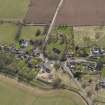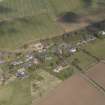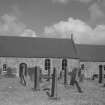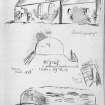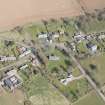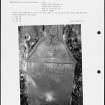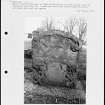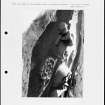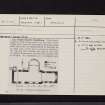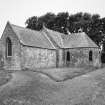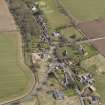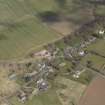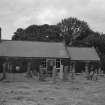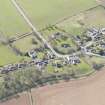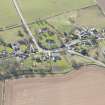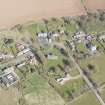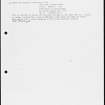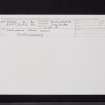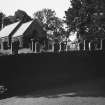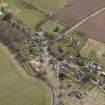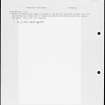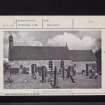Pricing Change
New pricing for orders of material from this site will come into place shortly. Charges for supply of digital images, digitisation on demand, prints and licensing will be altered.
Smailholm Church
Church (12th Century), Church (18th Century), Church (17th Century)
Site Name Smailholm Church
Classification Church (12th Century), Church (18th Century), Church (17th Century)
Alternative Name(s) Smailholm Parish Church
Canmore ID 57186
Site Number NT63NW 6
NGR NT 64882 36409
Datum OSGB36 - NGR
Permalink http://canmore.org.uk/site/57186
- Council Scottish Borders, The
- Parish Smailholm
- Former Region Borders
- Former District Roxburgh
- Former County Roxburghshire
Smailholm Parish Church was founded in the twelfth century. Its original layout and some early fabric are still preserved, including a blocked window and a doorway in the south wall of the chancel. Inside the church is a fragment of medieval carved stone bearing dog tooth and link decoration, which was evidently discarded by the mason before completion because the stone was flawed.
The church was altered during the seventeenth century, in accordance with the needs of Reformed worship. The medieval doorway was converted into a window, and a belfry, bearing an angle-sundial dated 1662, added to the western gable. Alterations to the interior included the creation of a gallery or laird's loft, where the local landowner and his family sat, separated from the other parishioners.
In 1820, the north aisle was added and the interior again remodelled.
In 1907, a stained glass window was donated to the church which commemorated the celebrated novelist Sir Walter Scott. Scott lived near Smailholm and was a frequent visitor to the village during his formative years.
Text prepared by RCAHMS as part of the Accessing Scotland's Past project
NT63NW 6.00 64882 36409
(NT 6487 3640) Church (NAT)
OS 6" map, Roxburghshire, (1924).
NT63NW 6.01 Centred 64884 36404 Graveyard
Parish Church, Smailholm. This church, standing within its graveyard near the centre of the village, dates from the 12th century and was among those consecrated by Bishop David de Bernham on 29 April 1243; but it was so extensively rebuilt in the 17th and 18th centuries, and again in 1820, that its original Romanesque character now appears only in the plan. Its constituents are a rectangular nave and chancel measuring respectively 52ft 9in by 23ft 6in and 25ft 9in by 19ft 6in over all; on the N side there is a modern transeptal aisle. The masonry includes cubical ashlar rising from a chamfered base-course. The chancel had a S door, if not originally at least from a relatively early time; but this was altered to a window in the 17th cnetury and another door was then struck out farther E. Ultimately this latter door was also filled in. The present entrance is a 17th-century doorway in the S wall of the nave. A belfry of 17th-century type on the W gable contains a Dutch bell inscribed MICHAEL BVRGERHVYS ME FECIT SOLI DEO GLORIA SMELLEM 1647. At the SW corner there is an angle sundial. An old photograph preserved in the vestry shows the internal arrangement that preceded the existing one; the pulpit, which had a graceful sounding-board with a thistle finial, was set about the centre of the S side, and the pews faced inwards from either end. A plan is given in RCAHMS 1956, fig.535 and an illustration in fig.45
Tombstones:
The following tombstones in the churchyard date from before 1707:
(1) A small headstone with a scrolled top and a panel on the front containing a cherub's head, the margin above bearing the admonition MEMENTO MORI. The back is inscribed HEIR / LYES IAMES MACK/DOUEL WHO DE/PARTED THE 24 / OF DECEM 1704 / HIS AGE 71.
(2) Two table-stones probably of the 17th century. Their inscriptions are illegible.
RCAHMS 1956, visited 7 July 1932, 25 March 1952.
Fully described above , this church is in use as such.
Visited by OS (WDJ) 21 September 1963.
NMRS REFENCE:
Built 1632
Architect:
William Elliot - alterations and repairs, 1820
EXTERNAL REFERENCE:
Scottish Record Office:
GD/157/784
Repair of the kirk. Payments of the Laird of Harden's proportion of the cost. Instruction to pay, receipt and letter, 1731-33
Photographic Survey (1956)
Photographic survey by the Scottish National Buildings Record in 1956.
Sbc Note
Visibility: This is an upstanding building.
Information from Scottish Borders Council.





























